An article written by John De Backere and chemistry student Marc Zambri has been featured on the February 2024 cover of the Journal of Chemical Education. Entitled “A Mobile Device Application for Visualizing Molecular Symmetry and Orbitals in Augmented Reality,” the publication discusses the development of a free app that assists students in learning two important chemical concepts.
The article notes that molecular symmetry and orbitals can be difficult for students to visualize in three dimensions. Instructors have used physical models and digital renderings in the past, but the chemistry team has now developed an app, leARnCHEM, which uses augmented reality to enable students to interact with these concepts. Available for free on both android and iOS devices, leARnCHEM is capable of both marker and markerless rendering of molecules.
“The motivation behind the project came from when I had to teach these topics in the introduction to inorganic chemistry course, where I relied on links to web resources or bringing physical models, both having some limitations and challenges,” said De Backere. “I thought how convenient it would be to have this accessible on students’ phone, using AR, to have a 3D model in front of every student.”
“Marc did all the coding and developed the application as a 4th year undergrad during his CHM499 project with me from 2020-2021."
Zambri, now a chemistry graduate student in the Kluger Research Group, created the app despite having no previous experience. “It was tough at the beginning. I spent a lot of time researching the available app design programs and once I chose a program, I spent even more time testing out the features and using online tutorials to learn more. There was a lot of trial and error in the beginning but once I got the basics down, I became confident that we could successfully build leARnCHEM.
The project came about, in part, because of the pandemic lockdown: “I was starting my 4th year of undergrad in the Fall of 2020 and needed to complete a CHM499 thesis project for my degree. As almost everything was online at this point, the options for a thesis project were limited, with few in-person lab opportunities available. Most of the projects based online were computational chemistry focused. I met with John to discuss ideas for a fourth-year project and was intrigued by his idea of developing an app for chemistry education, and specifically for molecular symmetry which was something I often struggled with in undergraduate inorganic chemistry courses.
CHM 499 is an upper-level course that presents students with an experimental or theoretical research problem under the supervision of a departmental faculty member. Students are required to submit a thesis as part of their course work, in addition to creating a research poster that is showcased and evaluated at an annual undergraduate poster session.
Zambri noted that much of the app development was completed during the thesis course. Even so, he spent a considerable amount of time designing and developing the app. “After completing the thesis course, finding time to work on the app became more difficult, especially when I started my graduate studies here at UofT. I spent a lot of my free time fixing issues that had come up in testing or working with John and the Mobile Application Development Lab (MADLab) to get the app published on the Apple app store and Google Play store so that it would be available publicly.”
Andy Dicks, Chemistry’s Associate Chair of undergraduate studies, congratulated De Backere and Zambri on their excellent work together. "This is a great example of a fruitful undergraduate-instructor collaboration in the field of chemistry education.”
“A best moment for me was when we received feedback from the first students that tried out the app,” Zambri said. "Most feedback was positive and encouraging and even the negative feedback was great to see as it opened my eyes to the issues that needed fixing or new ideas that we could implement.”
“It was amazing to see that this app could be a useful tool for students struggling with these concepts.”


